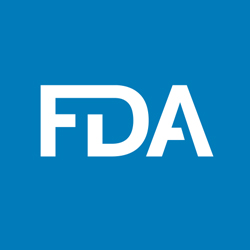 Society is driven by word-of-mouth endorsements. Likewise, it’s instinctive to share self-prescribed remedies that alleviate our various ailments. A colleague recommends ginger tea for a cold. A friend tells you how lavender essential oil helps with anxiety and insomnia. We habitually rely on such recommendations. However, a business making such statements must be careful that any claims are substantiated and that marketing efforts do not run afoul of any laws or regulations. This is especially true now, where consumers are desperately hunting for hygienic methods to prevent the spread of the novel coronavirus and to treat symptoms stemming from COVID-19. Amidst the seemingly uncontrollable COVID-19 pandemic, it might seem like the perfect time for dietary supplement manufacturers and holistic medicine practitioners to tout the benefits of their products and services. But is it?
Society is driven by word-of-mouth endorsements. Likewise, it’s instinctive to share self-prescribed remedies that alleviate our various ailments. A colleague recommends ginger tea for a cold. A friend tells you how lavender essential oil helps with anxiety and insomnia. We habitually rely on such recommendations. However, a business making such statements must be careful that any claims are substantiated and that marketing efforts do not run afoul of any laws or regulations. This is especially true now, where consumers are desperately hunting for hygienic methods to prevent the spread of the novel coronavirus and to treat symptoms stemming from COVID-19. Amidst the seemingly uncontrollable COVID-19 pandemic, it might seem like the perfect time for dietary supplement manufacturers and holistic medicine practitioners to tout the benefits of their products and services. But is it?
Articles Posted in Food and Drug Administration
FDA Public Hearing on Regulation of CBD: Are Extract, Processing and Quality Control Technologies Potentially More Important than Ever in the Cannabis Industry?
 On May 31, 2019 the FDA held a public hearing about cannabidiol (CBD) products. The day-long hearing saw comments and presentations from stakeholders ranging from nonprofit organizations like ASTM International to the Grocery Manufacturers Association, a food, beverage and consumer product trade association. Corporate entities in the cannabis industry also provided testimony, such as ingredient manufacturer Mile High Labs, which supplies products like CBD isolate and concentrate, and Socati, which provides high-CBD genetic varieties and extraction processes. Pharmaceutical companies like Zynerba Pharmaceuticals Inc., which produces the drug Connect-FX, were also present. Connect-FX is a CBD transdermal gel for treating Fragile X syndrome (Martin-Bell syndrome), a rare genetic disorder that causes developmental problems like intellectual disabilities. It is currently being evaluated as an experimental treatment for use in child patients in clinical trials.
On May 31, 2019 the FDA held a public hearing about cannabidiol (CBD) products. The day-long hearing saw comments and presentations from stakeholders ranging from nonprofit organizations like ASTM International to the Grocery Manufacturers Association, a food, beverage and consumer product trade association. Corporate entities in the cannabis industry also provided testimony, such as ingredient manufacturer Mile High Labs, which supplies products like CBD isolate and concentrate, and Socati, which provides high-CBD genetic varieties and extraction processes. Pharmaceutical companies like Zynerba Pharmaceuticals Inc., which produces the drug Connect-FX, were also present. Connect-FX is a CBD transdermal gel for treating Fragile X syndrome (Martin-Bell syndrome), a rare genetic disorder that causes developmental problems like intellectual disabilities. It is currently being evaluated as an experimental treatment for use in child patients in clinical trials.
Managing the Cybersecurity Risks of the Medical Internet of Things
The cybersecurity ramifications of the Internet of Things (IoT) are perhaps nowhere more crucial—potentially a matter of life and death, in fact—than in the realm of medical devices. Until recent times, a potential hack of the data-sharing that is a hallmark of the IoT raised far more privacy concerns than actual health risks. However, as medical devices begin to evolve and make use of the connectivity of the IoT, this balance may change. For one example, think pacemakers, where a malicious glitch in a networked piece of equipment could have fatal consequences.
Continue Reading →
Stay Transparent: FDA Compliance and Consumer-Generated Content
Colleague Caitlin Bloom Stulberg has recently released a thorough examination on FDA compliance in the realm of consumer-generated content.
It’s an issue we discuss often and is becoming more prevalent as increased social media use blurs the line between manufacturer-promoted advertising and independent consumer opinions. The discussion investigates when consumer-generated content may be imputed to a manufacturer and best practices to remain in compliance with FDA regulations.
The FDA Takes the Kardashian Endorsement Machine to Task
When Kim Kardashian speaks, the FDA listens.
Or, more precisely, when Kardashian, who has 46.8 million followers on Instagram, posts an enthusiastic endorsement—and advertisement—on the social media platform for Diclegis, a prescription drug for treating morning sickness, the agency takes notice (and gives it). In a letter to Duchesnay Inc., the drug’s makers, the FDA reprimanded the company for the “false or misleading” post and requested not only that Duchesnay take down the post, but that it submit a “comprehensive plan of action to disseminate truthful, non-leading, and complete corrective messages” about the drug.
FDA Draft Guidance Would Ease Regulatory Burdens for Certain mHealth Applications
On August 1, 2014, the Food and Drug Administration (FDA) released draft guidance that would exempt from premarket 510(k) review many low-risk medical devices–including certain mobile applications that can convert a cell phone into a medical device, such as a thermometer or a stethoscope. Although the guidance is not yet legally enforceable, the FDA also announced its intention not to enforce compliance with premarket review requirements for these devices and noted that it did not expect manufacturers to submit 510(k)s for these devices prior to adoption of a final rule or order. The FDA’s recognition that these devices are sufficiently well understood and do not present risks that require premarket review to ensure their safety and effectiveness–and its corollary decision to exercise enforcement discretion as to these devices–eases the regulatory burden on medical application developers and expands opportunities for continued development and dissemination of important mobile tools for improving patient care and physician practice.
For more information, check out the Client Alert.
Social Media and Medicine
The Federation of State Medical Boards recently adopted Model Policy Guidelines for use of social media in medical practice. The use of social media by medical practitioners and the number of mobile medical and wellness applications continues to increase. These factors are transforming certain aspects of the doctor patient relationship. However, this also creates legal issues of which practitioners and mobile app developers must be aware.
Among other things, these policies make clear that:
· provider organizations should develop social media policies
· patient privacy and confidentiality must be protected at all times
· physicians should not interact with patients on personal social networking or social media websites such as Facebook
· medical practitioners may use social networking sites to engage in peer-to-peer sharing with other physicians of experiences and education and to discuss areas of medicine and particular treatments, provided these sites are password-protected so that non-physicians do not gain access and view discussions implying medical advice
· when using peer-to-peer physician sites, physicians must reveal any existing conflicts of interest and they should be honest about their credentials as a physician
With respect to mobile medical applications, the FDA has issued draft guidance.
 The FDA currently plans to apply its regulatory oversight only to certain types of mobile apps, focusing on mobile apps that either have traditionally been considered medical devices or affect the performance or functionality of a currently regulated medical device. For the subset of mobile medical apps that are subject to regulatory oversight, manufacturers must meet the requirements associated with the applicable device classification.
The FDA currently plans to apply its regulatory oversight only to certain types of mobile apps, focusing on mobile apps that either have traditionally been considered medical devices or affect the performance or functionality of a currently regulated medical device. For the subset of mobile medical apps that are subject to regulatory oversight, manufacturers must meet the requirements associated with the applicable device classification.
The following examples represent mobile apps the FDA considers mobile medical apps and that will be subject to its regulatory oversight:
- Mobile apps that are an extension of one or more medical device(s) by connecting17 to such device(s) for purposes of controlling the device(s) or displaying, storing, analyzing, or transmitting patient-specific medical device data. Examples of displays of patient-specific medical device data include remote display of data from bedside monitors, display of previously stored EEG waveforms, and display of medical images directly from a Picture Archiving and Communication System (PACS) server, or similar display functions that meet the definition of an MDDS. Examples of mobile apps that control medical devices include apps that provide the ability to control inflation and deflation of a blood pressure cuff through a mobile platform and mobile apps that control the delivery of insulin on an insulin pump by transmitting control signals to the pumps from the mobile platform.
- Mobile apps that transform the mobile platform into a medical device by using attachments, display screens, or sensors or by including functionalities similar to those of currently regulated medical devices. Examples include a mobile app that uses a mobile platform for medical device functions, such as attachment of a transducer to a mobile platform to function as a stethoscope, attachment of a blood glucose strip reader to a mobile platform to function as a glucose meter, or attachment of electrocardiograph (ECG) electrodes to a mobile platform to measure, store, and display ECG signals; or, a mobile app that uses the built-in accelerometer on a mobile platform to collect motion information for monitoring sleep apnea.
- Mobile apps that allow the user to input patient-specific information and – using formulae or processing algorithms – output a patient-specific result, diagnosis, or treatment recommendation to be used in clinical practice or to assist in making clinical decisions. Examples include mobile apps that provide a questionnaire for collecting patient-specific lab results and compute the prognosis of a particular condition or disease, perform calculations that result in an index or score, calculate dosage for a specific medication or radiation treatment, or provide recommendations that aid a clinician in making a diagnosis or selecting a specific treatment for a patient.
The FDA plans to address in a separate issuance mobile medical apps intended to analyze, process, or interpret medical device data (electronically collected or manually entered) from more than one medical device. The implications of these analyses and interpretations may pose a wide range of risks to public health and patient safety.
The use of social media in health care and the number of mobile medical and wellness applications are sure to increase. If you are leveraging either or both of these trends, please make sure you consult with knowledgeable social media/health care attorneys to understand the legal issues.
Pillsbury’s social media team includes a number of attorneys who regularly assist clients in these areas.
 Internet & Social Media Law Blog
Internet & Social Media Law Blog


